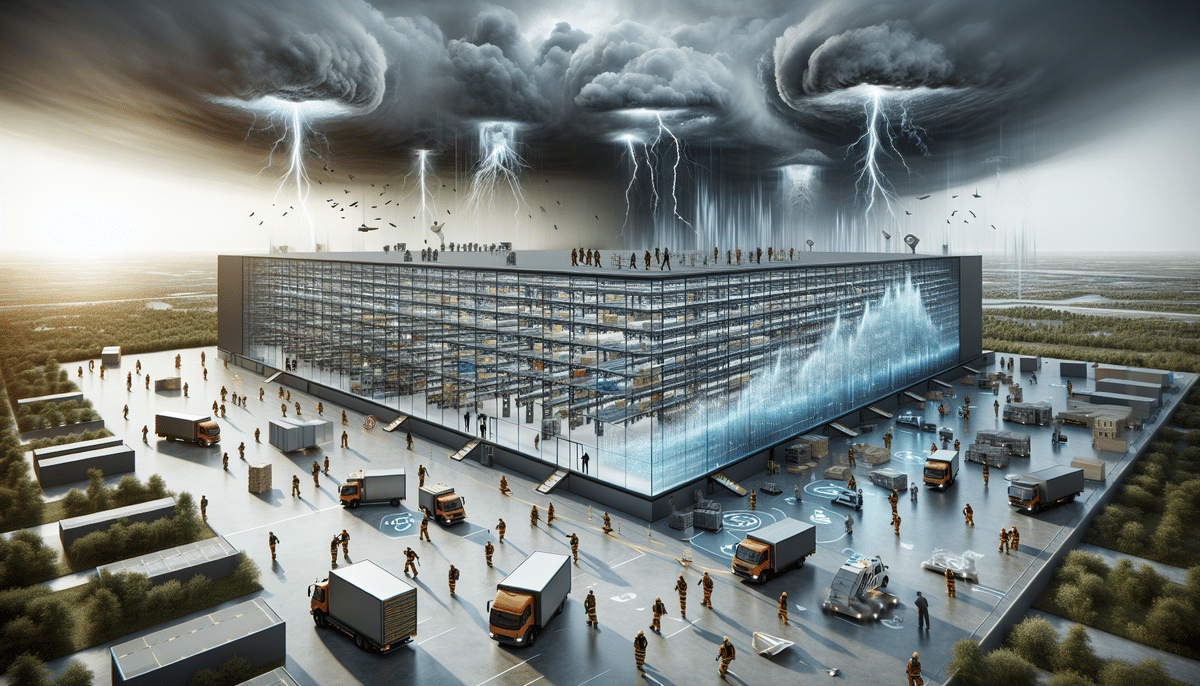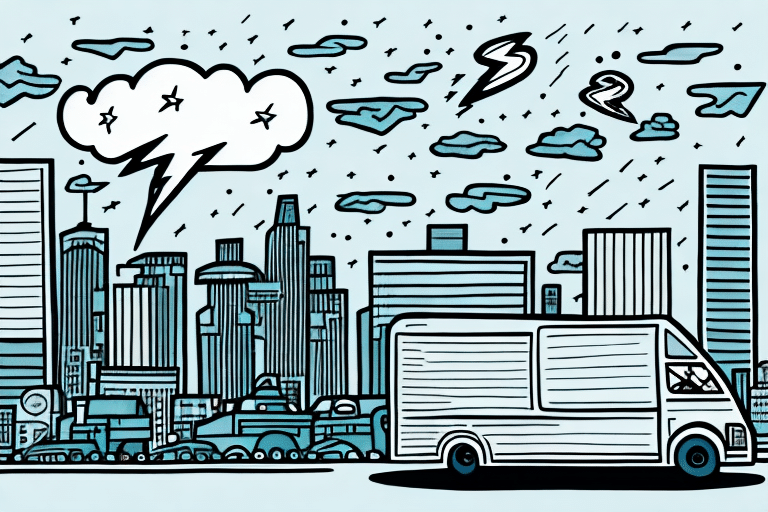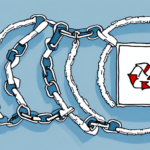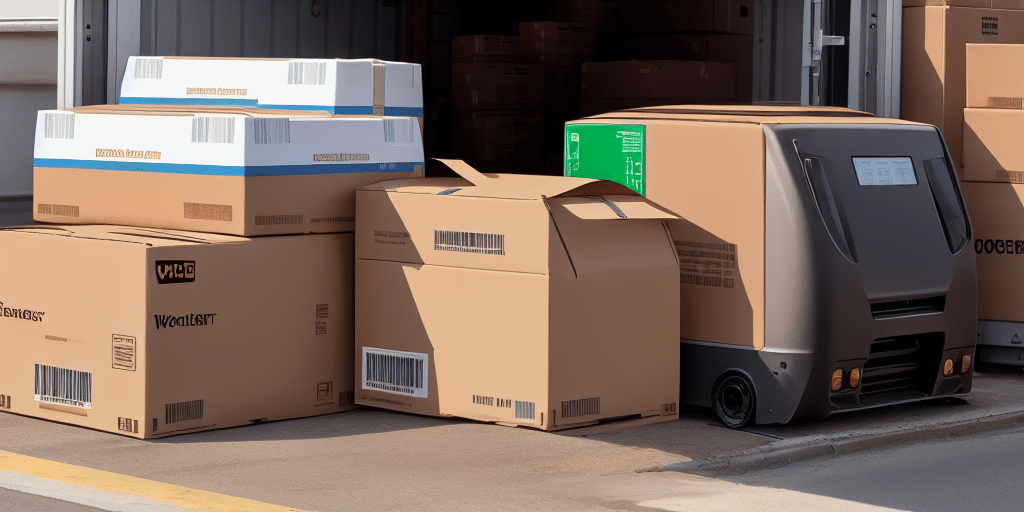How to Prepare for a Warehousing Logistics Disaster
In the world of logistics, the potential for disaster is always present. Between the forces of nature, infrastructure failures, and human error, numerous issues can swiftly cause your warehouse's operations to come to a standstill. That's why it's essential to have a comprehensive disaster preparedness plan in place. By assessing your warehouse's vulnerabilities, creating an evacuation plan, providing adequate training and equipment, staying up-to-date with emergency response protocols, incorporating lessons learned from past disasters, and leveraging technology, you can ensure that you're ready to respond to any challenge that arises.
Understanding the Risks of Warehousing Logistics Disasters
Before you can prepare for a disaster, you need to understand the potential threats your warehouse faces. In the context of warehousing logistics, disasters can be categorized into several types:
- Natural Disasters: Earthquakes, floods, hurricanes, and severe weather events can cause significant damage to warehouses. For example, the National Climatic Data Center reports an increase in extreme weather events over the past decade.
- Infrastructure Failures: Power outages, equipment malfunctions, and structural failures can disrupt operations. According to a FEMA report, infrastructure-related incidents account for approximately 30% of all warehouse disruptions.
- Human Error: Mistakes by employees, security breaches, or intentional sabotage can lead to significant operational downtime and financial loss.
The impact of a warehousing logistics disaster extends beyond physical damage. It can disrupt the supply chain, causing delays, lost revenue, and damage to your company's reputation. Therefore, implementing a robust disaster preparedness plan is crucial to minimize risks and mitigate impacts.
Assessing Your Warehouse's Vulnerabilities to Disasters
After identifying the potential risks, the next step is to assess your warehouse's vulnerabilities. Conducting a thorough evaluation of your facility can help pinpoint areas that need attention:
- Location: Is your warehouse situated in an area prone to natural disasters like floods or earthquakes?
- Building Condition: Assess the age, structural integrity, and maintenance status of your building.
- Inventory: Identify high-value items that require additional protection.
- Equipment: Ensure that machinery and technology are up-to-date and regularly maintained.
Involving your employees in this assessment is vital. They can provide insights into potential hazards and help foster a culture of safety and preparedness within your organization.
Creating a Disaster Preparedness Plan for Your Warehouse
A disaster preparedness plan should serve as a roadmap for your team during emergencies. Key components of an effective plan include:
- Guidelines for Different Disasters: Develop specific procedures for handling various types of disasters.
- Evacuation Procedures: Outline clear steps for safely evacuating the facility.
- Communication Protocols: Establish how information will be disseminated during an emergency.
- Equipment Shutdown Procedures: Ensure critical equipment is safely powered down to prevent damage.
Collaborating with emergency management experts and consulting industry best practices can further enhance the effectiveness of your plan.
Additionally, prioritize the safety of your employees by including procedures for accounting for all personnel and designating safe meeting points. Regular training sessions on emergency response and the use of safety equipment are essential to ensure everyone is prepared.
Developing an Evacuation Plan for Your Warehouse Staff
An evacuation plan is a cornerstone of your disaster preparedness strategy. To develop an effective evacuation plan:
- Identify Evacuation Routes: Clearly mark all possible evacuation paths and ensure they are unobstructed.
- Designate Assembly Points: Establish safe locations where employees can gather post-evacuation.
- Consider Special Needs: Provide additional support for employees with disabilities or other special requirements.
- Regular Updates: Periodically review and adjust the plan to reflect any changes in your facility or operations.
Effective communication during an evacuation is crucial. Establish a chain of command and designate specific individuals responsible for communicating with staff. Utilize multiple communication channels, such as public address systems, text alerts, and emails, to ensure everyone receives timely information.
Providing Adequate Training and Equipment for Emergency Response
Proper training and reliable equipment are essential for effective emergency response:
- Employee Training: Conduct regular training sessions on emergency procedures, evacuation protocols, and the use of safety equipment like fire extinguishers and first aid kits.
- Emergency Equipment: Ensure that essential equipment such as first aid kits, fire extinguishers, and emergency lighting are readily available and maintained.
- Specialized Equipment: For workplaces dealing with hazardous materials, provide specialized equipment like respirators and chemical spill kits.
- Regular Drills: Organize drills and simulations to reinforce training and identify areas for improvement.
Regularly reviewing and updating your emergency preparedness plan will help maintain a high level of readiness among your employees.
Stockpiling Essential Supplies and Resources for Emergencies
Maintaining a stockpile of essential supplies can significantly enhance your ability to respond effectively during a disaster:
- Basic Supplies: Water, non-perishable food, first aid supplies, and emergency lighting.
- Backup Power Sources: Generators and fuel to maintain operations during power outages.
- Spare Equipment Parts: Additional parts for critical machinery to reduce downtime in case of equipment failure.
Tailor your stockpile to the specific types of emergencies most likely to affect your warehouse. Regularly review and replenish supplies to ensure they remain usable and up-to-date.
Establishing Communication Protocols During Disasters
Effective communication is critical during a disaster. Your disaster preparedness plan should include:
- Emergency Communication Systems: Implement systems such as two-way radios, satellite phones, or emergency notification software.
- Emergency Contact List: Maintain an up-to-date list of contact information for all employees, emergency responders, and key stakeholders.
- Regular Testing: Conduct regular tests of your communication protocols to ensure they function correctly during an emergency.
Staying Up-to-Date with Local Emergency Response Protocols
Local emergency response protocols can evolve, so it's essential to stay informed about any changes:
- Monitor Local Alerts: Follow local weather alerts and emergency announcements through official channels like National Weather Service.
- Engage with Emergency Services: Maintain relationships with local fire departments, police, and other emergency responders.
- Community Involvement: Participate in local disaster preparedness and response initiatives to stay informed and contribute to community resilience.
Conducting Regular Drills and Reviews of Your Disaster Preparedness Plan
Regular drills and reviews are vital for maintaining an effective disaster preparedness plan:
- Scheduled Drills: Conduct evacuation and emergency response drills at least twice a year.
- Plan Reviews: Annually review and update your disaster preparedness plan to reflect any changes in operations, staff, or infrastructure.
- Feedback Mechanism: After each drill, gather feedback from participants to identify strengths and areas for improvement.
These practices help ensure that your team remains prepared and that your plan evolves to address new challenges.
Incorporating Lessons Learned from Past Disasters into Future Planning
Learning from past disasters can enhance your preparedness:
- Post-Disaster Reviews: After any incident, conduct a thorough review to understand what went well and what could be improved.
- Staff Feedback: Encourage employees to share their experiences and suggestions for improving emergency response procedures.
- Expert Consultation: Work with disaster response experts to integrate best practices and innovative solutions into your plan.
Partnering with Local Emergency Response Agencies to Enhance Disaster Preparedness
Collaborating with local emergency response agencies can significantly strengthen your disaster preparedness:
- Develop Relationships: Establish connections with local fire departments, police, and emergency medical services.
- Participate in Planning Committees: Join local emergency planning committees to stay informed and contribute to community-wide preparedness efforts.
- Share Information: Provide and receive valuable data and insights that can improve both your and the community's emergency responses.
Reviewing Insurance Coverage and Policies for Disaster Situations
Ensuring adequate insurance coverage is a critical aspect of disaster preparedness:
- Assess Current Policies: Review your existing insurance policies to understand coverage limits, exclusions, and requirements.
- Consult with Experts: Work with insurance agents or brokers to identify gaps in your coverage and explore additional protection options.
- Update Policies: Adjust your insurance coverage as needed to ensure comprehensive protection against potential disaster scenarios.
Proper insurance coverage can provide financial stability and resources necessary for recovery following a disaster.
Leveraging Technology and Data Analysis to Enhance Disaster Preparedness
Utilizing technology and data analysis can significantly improve your disaster preparedness efforts:
- Environmental Monitoring: Use sensors and monitoring tools to track factors such as temperature, humidity, and structural integrity in real-time.
- Predictive Analytics: Leverage data analytics to identify patterns and predict potential disaster events, allowing for proactive measures.
- Management Software: Implement disaster management software to streamline communication, plan updates, and resource allocation.
Integrating these technologies into your preparedness plan can enhance your ability to respond swiftly and effectively during emergencies.
Preparing for the Long-Term Impacts of a Warehousing Logistics Disaster
Disasters can have long-lasting effects on your warehousing operations. To ensure sustained recovery and resilience:
- Alternate Storage Locations: Identify and secure alternative storage facilities to maintain operations if your primary warehouse is compromised.
- Supply Chain Contingencies: Develop contingency plans for supply chain interruptions, including alternative suppliers and transportation routes.
- Financial Planning: Work with financial advisors to create strategies for mitigating the financial impact of disasters, such as emergency funds or credit lines.
By planning for the long-term consequences of disasters, you can facilitate a quicker and more effective recovery, ensuring the continuity of your business operations.
By following these guidelines, you can ensure that you're fully prepared to respond to a warehousing logistics disaster. Proactive steps to assess vulnerabilities, develop a disaster preparedness plan, train your employees, and stay informed will help safeguard the safety of your employees, protect your assets, and minimize the impact of any disaster.






















